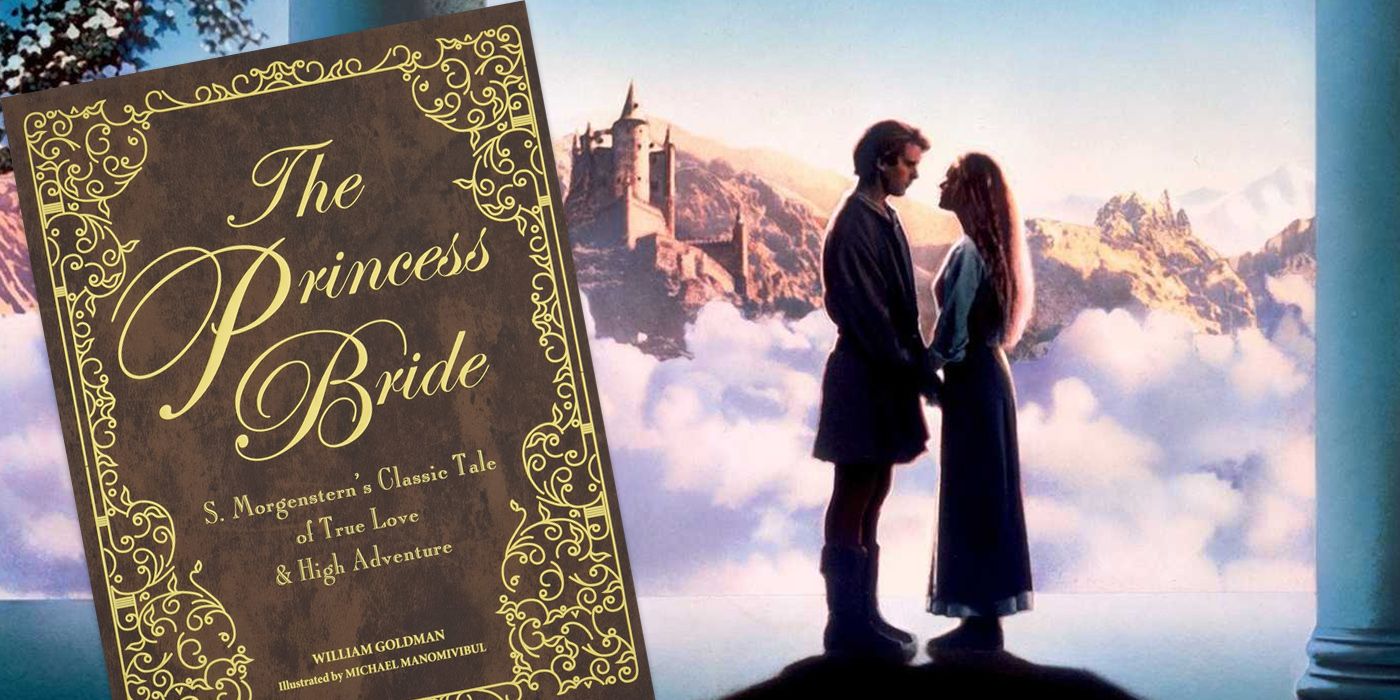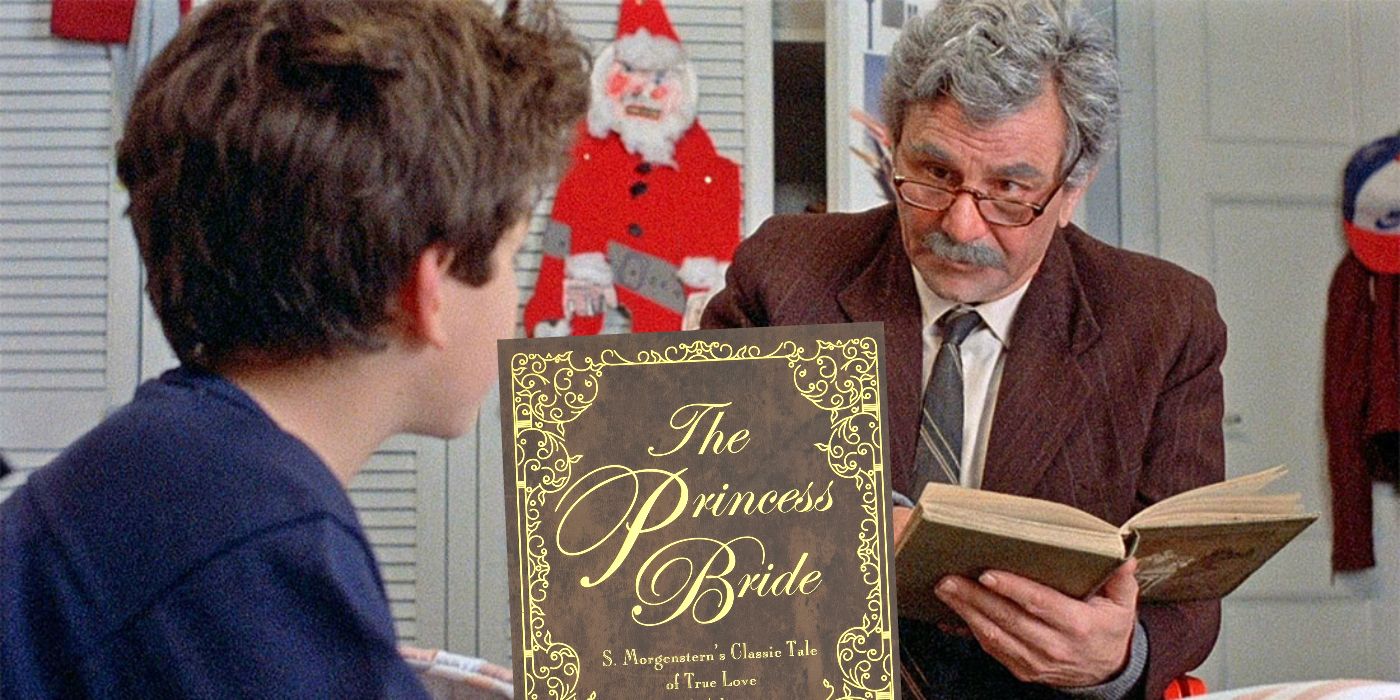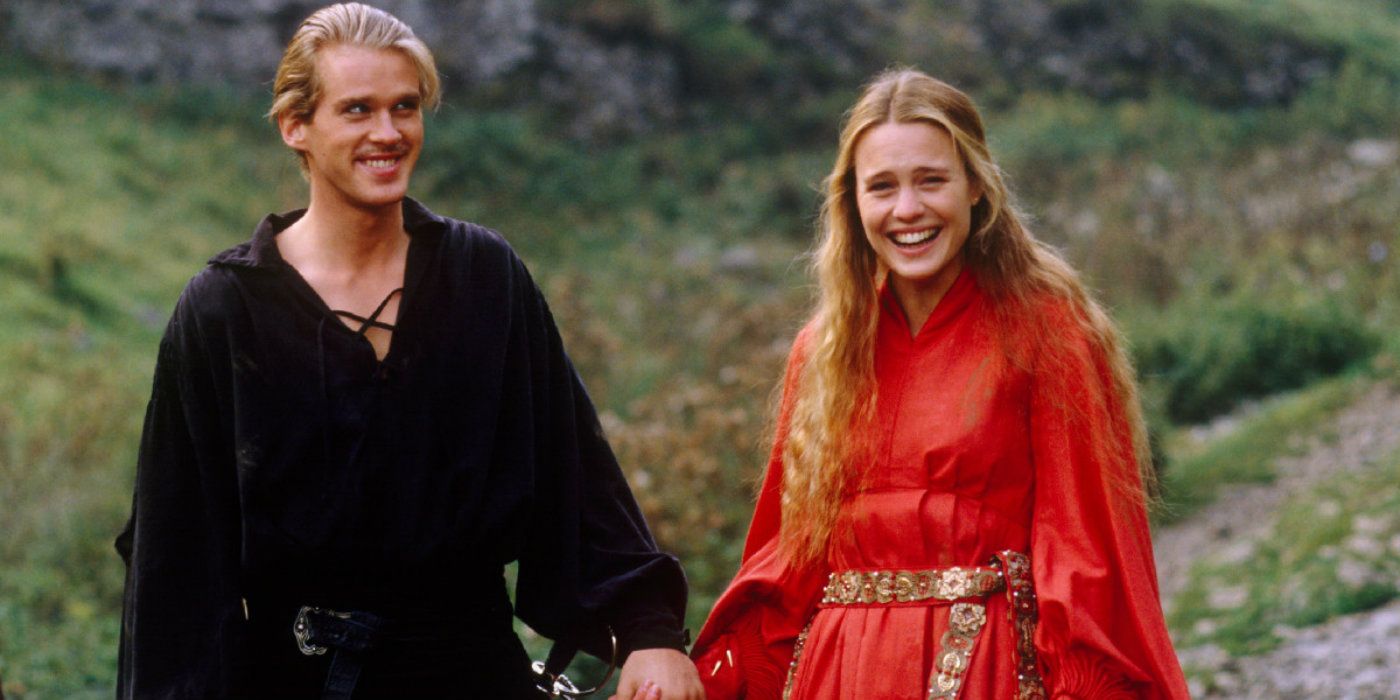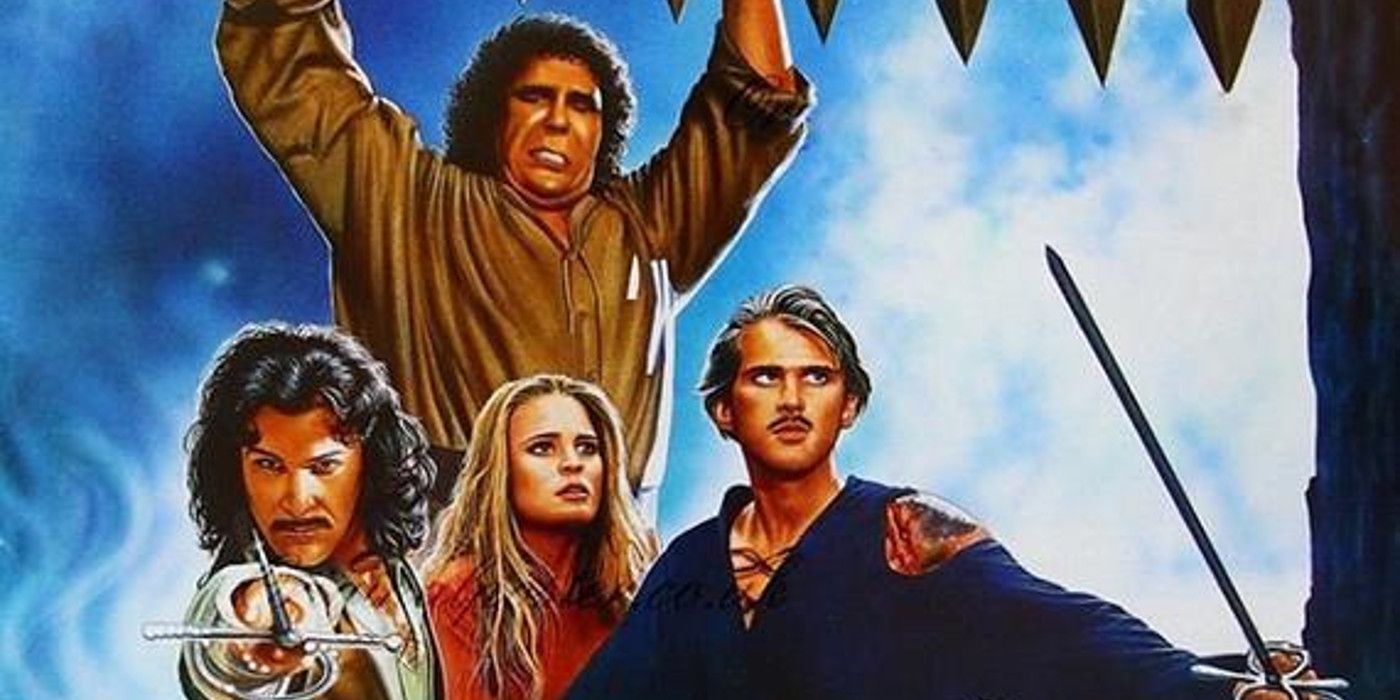The Princess Bride is a book within a movie, and the movie itself is based on a real book; however, there are several differences between the two versions. William Goldman's novel The Princess Bride was first published in 1973. In addition to his work as a novelist, Goldman was a screenwriter, writing such classics as Butch Cassidy and the Sundance Kid and All the President's Men; it was only natural that he himself adapted The Princess Bride for film.
The Princess Bride, which went on to be regarded as one of the best fantasy movies of the '80s, opens with a man reading a fairy tale to his grandson, who is home sick in bed. The majority of film takes place within the context of that book. The story is about Princess Buttercup of Florin. The princess falls in love with a farmhand named Westley. Once Westley is believed to be killed in a shipwreck, Buttercup is forced to marry a prince, but is kidnapped before the wedding. Westley is discovered to be alive, and the movie follows his and Buttercup's tumultuous journey of finding each other again and living happily ever after.
As with any book to movie adaptation, The Princess Bride strayed a bit from its original source material. Details were changed and cut so that the story would be better suited for the screen. The following are the biggest differences between The Princess Bride film and the original book.
The Structure of The Princess Bride Book vs. Movie
In the film, "The Princess Bride" is a fairy tale by S. Morgenstern that a grandfather reads to his grandson; however, the narrative context is more complicated in the novel. Goldman writes himself into his novel using a fictional framing device that presents its story as an abridged version of a book his father read to him as a child: a historical account of the kingdom of Florin written by S. Morgenstern, who happened to be a prominent citizen of the kingdom. The narration states that because he found the entire book to be dreadfully boring, he decided to abridge the book using "the good parts" for The Princess Bride.
While the novel The Princess Bride presents Princess Buttercup and Westley's love story as a historical account, in the film, it's simply a fairy tale. The foundations of each story are the same, but the book provides a more detailed account. Goldman wrote the screenplay for The Princess Bride himself, and he was wise to leave himself out of the plot device. The film became popular among young viewers, so the author inserting himself into the story may have been too meta for young audiences to follow.
The Characters in The Princess Bride Book vs. Movie
The film adaptation of The Princess Bride omits a handful of characters from the novel. It also changes some prominent physical traits of certain characters. For example, Buttercup is to be married off to Prince Humperdinck in the story. In the film, he has the classic look of a prince: tall and dashing. In the novel, he's quite overweight. Vizzini, who is responsible for one of the most-quoted lines in the film — "Inconceivable!" looks a lot different than he does in the novel as well: he looks like an ordinary man in the movie, but in the book, he's described as being a humpback with a near-angelic face.
These changes don't impact the characters of Humperdinck and Vizzini too much. Goldman's most notable change from book to film is the character of Buttercup. While her beauty remains consistent from page to screen, Buttercup's personality was changed for the movie. The princess is pretty dim in the book, but in the movie, Buttercup is outspoken and cunning. It's a welcome change, as Hollywood in the 1980s was not in need of any additional shallow female characters. This change allowed for Buttercup to become an iconic female character in movie history. She's still a damsel in distress, but she has a mind of her own.
The difference between Buttercup's intelligence in The Princess Bride movie versus the book can be observed in one of the film's most famous scenes. It chronicles Buttercup and Westley falling in love with one another on the farm. She'd consistently order Westley around, and he'd simply reply, "As you wish." In the novel, he literally has to write out that this means he loves her. Even after that, she only comes to realize her reciprocated feelings for him after she's filled with jealousy over another woman gawking at him. She spends a night wrestling with her feelings, and realizes that jealousy means she loves him. In the movie adaptation, Buttercup quickly recognizes that "As you wish" is his way of telling her he is in love with her, and she's self-aware enough to realize she loves him too. Both versions of this sequence end with the duo finally professing their love for one another shortly before Westley goes missing.
The Ending of The Princess Bride Book vs. Movie
The film adaptation of The Princess Bride has every component of a perfect fairy tale — romance, adventure, danger and outlandish characters. Naturally, it ends the story with a happily ever after for the film's heroes: Westley, Buttercup and their friends literally ride off into the sunset. The movie changed the story's true ending. Westley is gravely injured and the novel ends with Humperdinck's men closing in on the heroes. While Goldman, as narrator of the novel, believes that they all got away and Westley survives, reading between the lines will prove that that picture-perfect ending didn't happen.
The Princess Bride was adapted in a way that made sense for the screen, without losing the integrity of the original source material — it helped that Goldman had creative control over the screenplay. Losing the meta nature and detail-heavy structure of the book endeared the story to audiences, and has continued to do so for years to come. Many movies have tried and failed to adapt live-action fairy tales for the big screen, but the talented screenwriter Goldman, with help from famed director Rob Reiner, had the perfect touch to turn the book into something charming: an enduring fairy tale that is sure to delight audiences for years to come.




